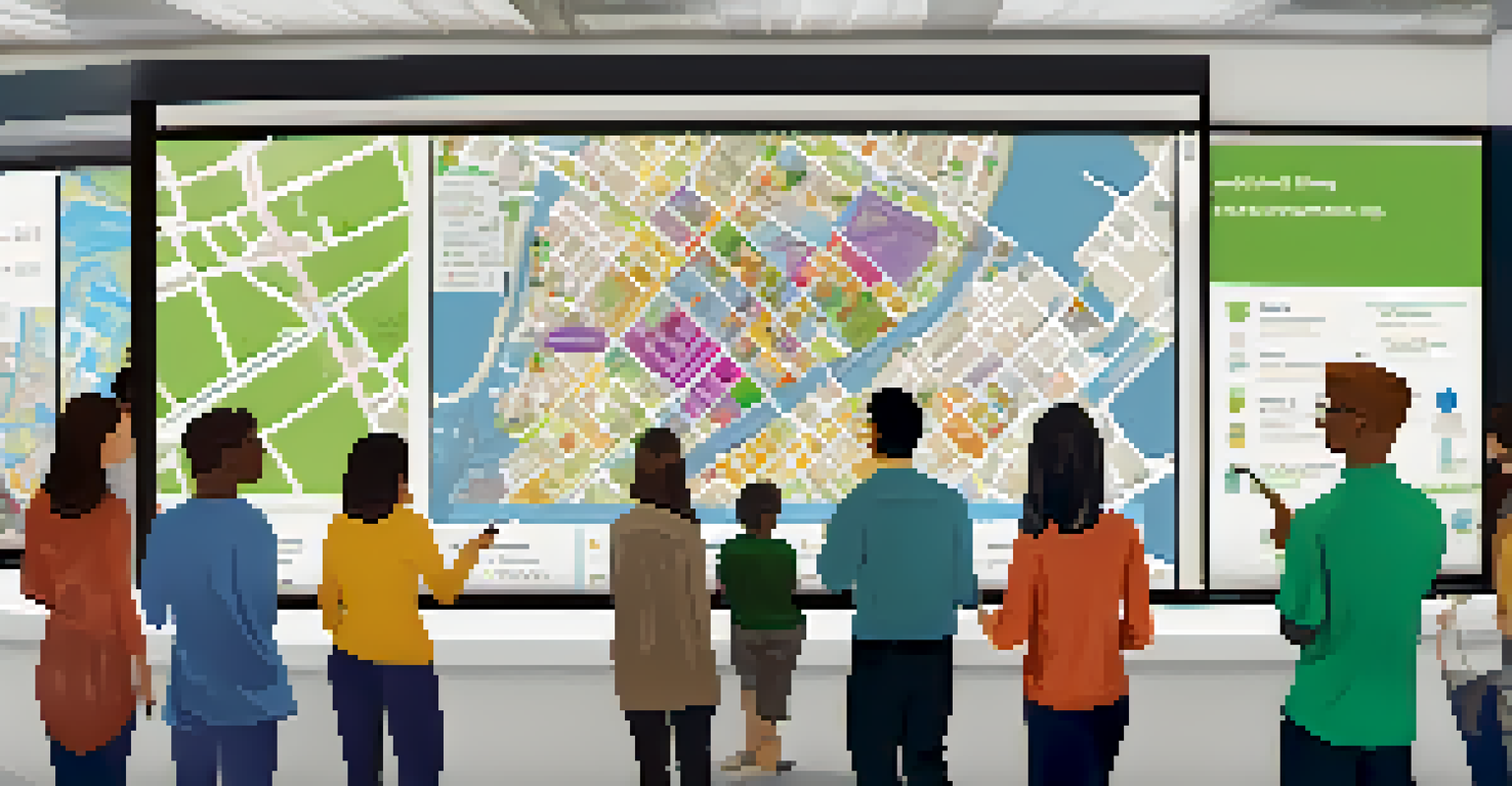Understanding Public Engagement in NYC Urban Planning Initiatives

The Importance of Public Engagement in Urban Planning
Public engagement is crucial in urban planning as it ensures that the needs and wants of the community are considered. In a bustling metropolis like New York City, involving residents in decision-making leads to more sustainable and effective outcomes. When people feel heard, they are more likely to support initiatives that improve their neighborhoods.
Public participation is a key element in successful urban planning, ensuring that the voices of the community are integrated into the decision-making process.
Moreover, public engagement fosters a sense of ownership among residents. When citizens participate in discussions about their environment, they develop a stronger connection to their community. This connection can lead to volunteerism, advocacy, and a greater commitment to maintaining and improving local spaces.
In NYC, this process is not just about gathering opinions but creating a platform for meaningful dialogue. The city employs various methods, from public meetings to online surveys, to ensure that diverse voices are included in urban planning initiatives.
Methods of Engaging the Public in Urban Planning
Urban planners in NYC utilize a variety of methods to engage the public effectively. Traditional town hall meetings allow residents to voice their concerns and suggestions directly to decision-makers. However, these meetings can sometimes feel intimidating, so planners also leverage digital tools to reach a broader audience.

Online platforms and social media have become essential in gathering public input. By encouraging people to participate in surveys or comment on proposed projects through user-friendly websites, planners can collect valuable feedback from those who might not attend in-person meetings. This hybrid approach ensures that all demographics are represented.
Public Engagement Enhances Planning
Involving residents in urban planning leads to more sustainable and effective outcomes, fostering a sense of ownership and community connection.
Workshops and focus groups also play a significant role in this engagement process. They provide settings that encourage deeper conversations and collaboration among community members, allowing for more nuanced insights into local needs.
Challenges in Public Engagement Efforts
Despite the various methods employed, public engagement in urban planning is not without its challenges. One significant hurdle is ensuring that all voices are heard, especially from marginalized communities. Often, these groups may feel disconnected from the planning process, leading to a lack of representation.
Engagement is not just about asking for input; it’s about fostering a relationship of trust and collaboration between planners and the community.
Another challenge is the timing and frequency of engagement opportunities. If meetings are held at inconvenient times or are infrequent, key stakeholders may miss the chance to participate. Planners must be mindful of community members' schedules and commitments to maximize involvement.
Moreover, the complexity of urban planning projects can sometimes alienate the public. Jargon and technical terms can create barriers to understanding, making it essential for planners to communicate in clear, relatable language.
Case Studies of Successful Engagement in NYC
One notable example of successful public engagement in NYC is the East Side Coastal Resiliency Project. This initiative aims to protect vulnerable neighborhoods from flooding while improving public spaces. The planning process included extensive community outreach, allowing residents to share their thoughts and preferences for the design.
Another success story is the 'Broadway Vision' plan, which focused on transforming Times Square into a pedestrian-friendly space. Through surveys and public workshops, the city gathered input that shaped the final design, making it a more inviting space for both locals and tourists.
Technology Boosts Participation
Digital tools and social media facilitate broader public input and make engagement more accessible to diverse demographics.
These case studies demonstrate that when urban planners actively involve the community, the resulting projects are not only better received but also more effective in addressing the unique challenges of urban environments.
The Role of Technology in Public Engagement
Technology plays a pivotal role in enhancing public engagement in urban planning. Digital tools, such as interactive mapping applications, allow residents to visualize proposed changes to their neighborhoods. This visualization helps people understand the potential impact of projects and provides a platform for feedback.
Social media also serves as a valuable tool for outreach, enabling planners to share information quickly and gather input from a broader audience. Platforms like Twitter and Facebook can facilitate discussions, making it easier for residents to engage with urban planners and each other.
Moreover, virtual town halls have emerged as an effective alternative to in-person meetings, especially during times when gathering in large groups is challenging. These online events can attract participants from all corners of the city, ensuring a diverse range of voices in the planning process.
Building Trust Between Planners and the Community
Building trust is essential for successful public engagement in urban planning. When residents believe that their feedback is valued, they are more likely to participate in future initiatives. Transparency in the decision-making process fosters this trust, as people can see how their input influences outcomes.
Urban planners can establish trust by consistently communicating updates and being open about challenges. By acknowledging concerns and demonstrating a commitment to addressing them, planners can build credibility within the community. This open dialogue is key to forming lasting relationships.
Trust is Key in Urban Planning
Building trust between planners and the community through transparency and collaboration is essential for successful public engagement.
Collaborating with local organizations and community leaders can also enhance trust-building efforts. These partnerships can bridge gaps between planners and residents, ensuring that engagement efforts are culturally sensitive and relevant to the community's needs.
Future Directions for Public Engagement in NYC
As NYC continues to grow and evolve, the approach to public engagement in urban planning must also adapt. The increasing reliance on technology presents both opportunities and challenges. Urban planners need to harness new tools to make engagement more effective while ensuring that no one is left behind in the process.
Moreover, future initiatives should prioritize inclusivity and accessibility. This means not only reaching out to traditionally marginalized groups but also creating environments where everyone feels comfortable sharing their thoughts. Training for planners on cultural competency can be a beneficial step in this direction.

Finally, evaluating and refining engagement strategies is crucial. By regularly assessing the effectiveness of public engagement efforts, urban planners can identify areas for improvement, ensuring that the process remains dynamic and responsive to the community's needs.